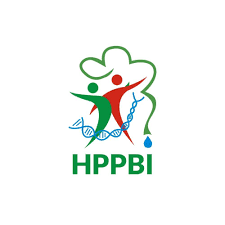Pengaruh Penggunaan Trello terhadap Hasil Belajar dan Persepsi Peserta Didik pada Konsep Sistem Sirkulasi
DOI:
https://doi.org/10.15575/bioeduin.v12i2.20119Keywords:
Trello, hasil belajar, persepsi.Abstract
Penelitian ini bertujuan untuk mengetahui pengaruh penggunaan Trello terhadap hasil belajar dan persepsi peserta didik pada konsep sistem sirkulasi. Metode penelitian yang digunakan adalah metode quasi experiment dengan menggunakan tes the matching-only posttest- only control group design dan non-tes yakni angket persepsi menggunakan kuesioner USE. Populasi dari penelitian ini adalah seluruh kelas XI MIPA SMA Negeri 6 Tasikmalaya tahun ajaran 2021/2022. Sampel diambil secara purposive sampling yaitu kelas XI MIPA 2 sebanyak 36 peserta didik dan XI MIPA 5 sebanyak 36 peserta didik. Pengumpulan data dilakukan dengan memberikan soal pilihan majemuk untuk memperoleh data hasil belajar peserta didik dan memberikan angket persepsi pada kelas XI MIPA 5 sebagai kelas eksperimen. Teknik analisis data yang digunakan adalah independent sample t test. Berdasarkan analisis data dan pengujian hipotesis menunjukan bahwa ada pengaruh penggunaan Trello terhadap hasil belajar dengan signifikansi sebesar 0,000 dan pencapaian angket persepsi penggunaan Trello pada peserta didik kelas eksperimen sebesar 90% yang berarti persepsi penggunaan Trello sangat baik.
This study aims to determine the effect of using Trello on learning outcomes and students' perceptions of the concept of the circulation system. The research method used is a quasi-experimental method using the matching-only posttest-only control group design test and non-test, namely the perception questionnaire using the USE questionnaire. The population of this research is all class XI MIPA SMA Negeri 6 Tasikmalaya for the academic year 2021/2022. Samples were taken by purposive sampling, namely class XI MIPA 2 with 36 students and XI MIPA 5 with 36 students. Data was collected by giving multiple choice questions to obtain data on student learning outcomes and providing a perception questionnaire for class XI MIPA 5. The data analysis technique used was the independent sample t test. Based on data analysis and hypothesis testing, it shows that there is an effect of using Trello on learning outcomes with a significance of 0.000 and the achievement of a questionnaire on perceptions of Trello use in experimental class students is 90%, which means that the perception of using Trello is very good.
Â
References
Anderson, Lorin W. dan David R. Krathwohl. (2017). Kerangka Landasan Untuk Pembelajaran, Pengajaran dan Asesmen. Yogyakarta: Pustaka Pelajar.
Asnawi, N. (2018). Pengukuran Usability Aplikasi Google Classroom Sebagai E-learning Menggunakan Use Questionnaire (Studi Kasus: Prodi Sistem Informasi UNIPMA). Research : Computer, Information System & Technology Management, 1(1), 17. https://doi.org/10.25273/research.v1i1.24 51
Azhar, F. (2020). Efektivitas Penggunaan Media Pembelajaran Interaktif pada Mata Kuliah Teori dan Praktik Plumbing. Jurnal PenSil, 9(2), 97–103.
https://doi.org/10.21009/jpensil.v9i2.153 40
Conceicao, M. H., Albuquerque, O. M., Soares-Silva, L. H., & Braule, J. F. P. (2022). Using Socrative and Trello in Online Classes at the University of BrasÃlia (UnB). Lecture Notes in Networks and Systems, 466 LNNS(May), 116–126. https://doi.org/10.1007/978-3-
-04680-3_8
Connie, C., & Risdianto, E. (2022). MOOCs and Trello Based Blended Learning to Increase Student Involvement. AL- ISHLAH: Jurnal Pendidikan, 14(1), 1001–1008.
https://doi.org/10.35445/alishlah.v14i1.1 378
Ekayani, N. L. P. (2021). Pentingnya Penggunaan Media Pembelajaran Untuk Meningkatkan Prestasi Belajar Siswa, March, 1–16.
Fraenkel, J. R. & Wallen, N. E. (1932). How to Design and Evaluate Research in Education. New York: Beth Mejia.
Harefa, N., & Sumiyati, S. (2020). Persepsi Siswa terhadap Google Classroom sebagai LMS pada masa Pandemi Covid-19. Science Education and Application Journal, 2(2), 88. https://doi.org/10.30736/seaj.v2i2.270
Kakasevski, G., Mihajlov, M., Arsenovski, S., Chungurski, S., Fon, U., Makedonia, S., Makedonia, S., Cara, A., & Pembelajaran, M. (2008). Mengevaluasi Usability dalam Learning Management System Moodle. 23–26.
Khoii, R., & Gharibshah, A. (n.d.). Effects of Using the Google Search Engine, the Trello Learning Management System (TLMS), and Classroom Form-Focused
Instruction on Developing EFL. 12th International Conference, 1–5. https://conference.pixel- online.net/ICT4LL/files/ict4ll/ed0012/FP
/0960-ICT4128-FP-ICT4LL12.pdf
Lund, A. M. (2001). Measuring Usability with the USE Questionnaire. Usability Interface, 8(2), 3–6.
Mansur, A. F Uebe., Alves, A. C., & Torres,
R. B. (2019). Trello as Virtual Learning Environment and Active Learning Organiser for PBL Classes: An analysis under Bloom’s Taxonomy. International Symposium on Project Approaches in Engineering Education, 9, 245–252.
Pamungkas, D., Aini, N., Novianti, N., & Sulisworo, D. (2016). Efektifitas Google Classroom Terhadap Keaktifan Mahasiswa Dalam Era Revolusi Industri 4.0. THEOREMA, 1(1), 44–53.
Parsons, D., Thorn, R., Inkila, M., & MacCallum, K. (2019). Using Trello to Support Agile and Lean Learning with Scrum and Kanban in Teacher Professional Development. Proceedings of 2018 IEEE International Conference on Teaching, Assessment, and Learning for Engineering, TALE 2018, December, 720–724.
https://doi.org/10.1109/TALE.2018.8615 399
Shchetynina, O., Kravchenko, N., Horbatiuk, L., Alieksieieva, H., & Mezhuyev, V. (2022). Trello as a Tool for the Development of Lifelong Learning Skills of Senior Students. Postmodern Openings, 13(2), 143–167. https://doi.org/10.18662/po/13.2/447
Downloads
Published
How to Cite
Issue
Section
Citation Check
License
Authors who publish in Jurnal BIOEDUIN agree to the following terms:
- Authors retain copyright and grant the journal right of first publication with the work simultaneously licensed under a Attribution-ShareAlike 4.0 International (CC BY-SA 4.0) License that allows others to share the work with an acknowledgment of the work's authorship and initial publication in this journal.
- Authors are able to enter into separate, additional contractual arrangements for the non-exclusive distribution of the journal's published version of the work (e.g., post it to an institutional repository or publish it in a book), with an acknowledgment of its initial publication in this journal.
- Authors are permitted and encouraged to post their work online (e.g., in institutional repositories or on their website) prior to and during the submission process, as it can lead to productive exchanges, as well as earlier and greater citation of published work (See The Effect of Open Access).








